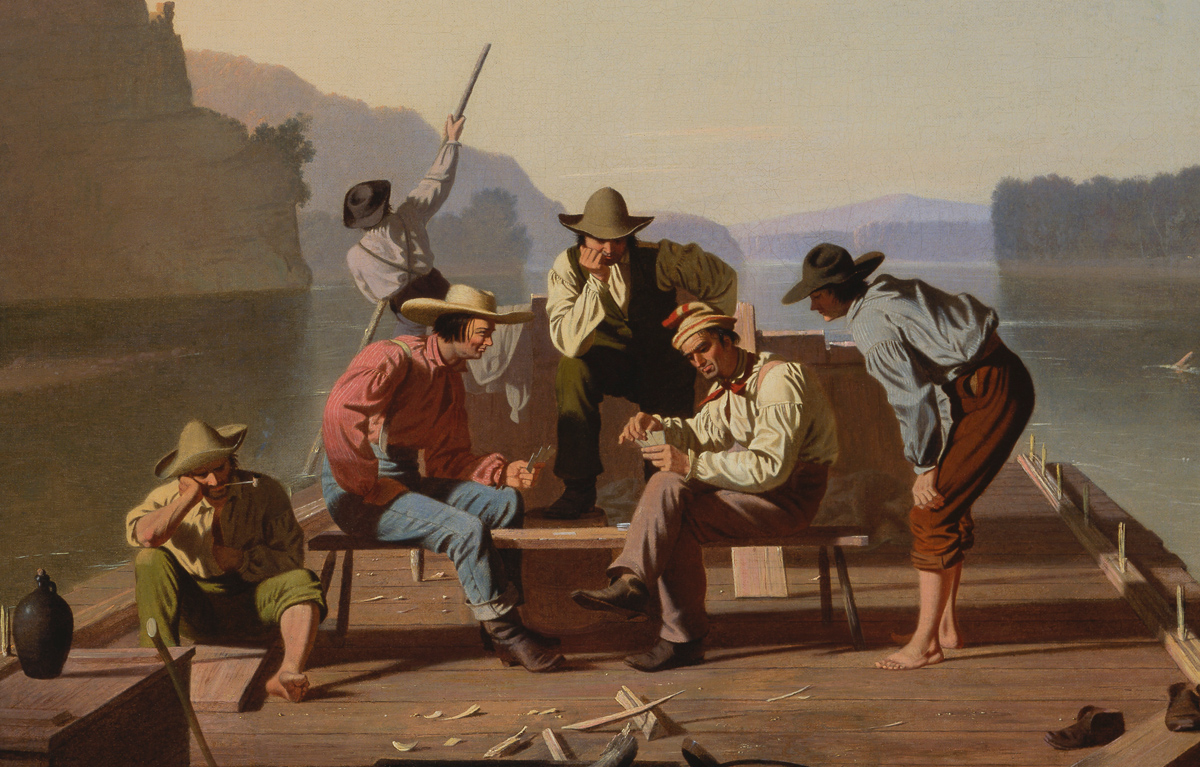
What to wear?
Adding human figures to a digital scene is one thing. Providing them with accurate historical clothing is something else.
Plenty of online sources pop up when you search for early 19th century clothing, complete with fashion plates and examples of clothing worn by the upper classes. But you need to go deeper to find information about everyday clothing worn by working people.
Among the best sources of visual information are early American genre painters such as William Sydney Mount, George Caleb Bingham, and Francis William Edmonds. Of these I’m most familiar with Bingham, who lived and painted on the Missouri frontier in the early 1800s. At that time the western New York frontier was just as raw, so his depictions of flatboat men and farmers apply as well to the early Erie Canal.
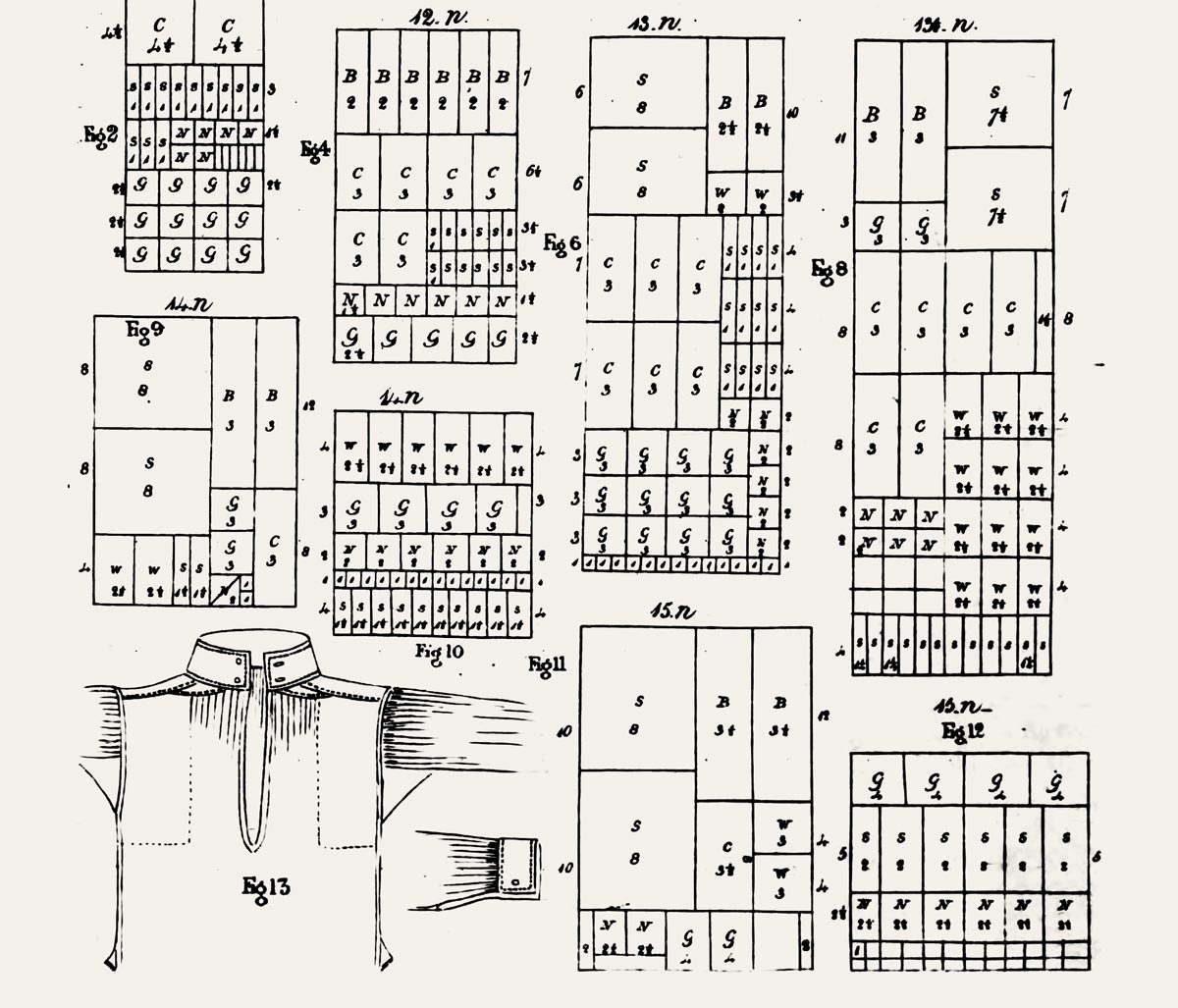
But while paintings can provide context and color, you still need patterns. Several 19th-century tailor’s guides are available in digital format, and I’ve already mentioned how useful they can be when creating upscale digital clothing. For working-class folks, there is The Workwoman’s Guide, published in 1840.
Its full title: The Workwoman’s Guide, Containing Instructions to the Inexperienced in Cutting Out and Completing Those Articles of Wearing Apparel, &c., which are Usually Made at Home: Also, Explanations on Upholstery, Straw-platting, Bonnet-making, Knitting, &c. A mouthful, to be sure, but seriously: everything you might want to know about running an early 19th-century household is in this book.
Besides historical sources, these recent references have been helpful:
- Pattern Cutting for Men’s Costume, by Elizabeth Friendship (Bloomsbury, 2008)
- The Mountain Man’s Sketch Book, Volume One, by James Austin Hanson and Kathryn J. Wilson (The Fur Press, 1976)
- Making Working Women’s Costume, by Elizabeth Friendship (The Crowood Press, 2018)
- Regency Women’s Dress, by Cassidy Percoco (Batsford, 2015)
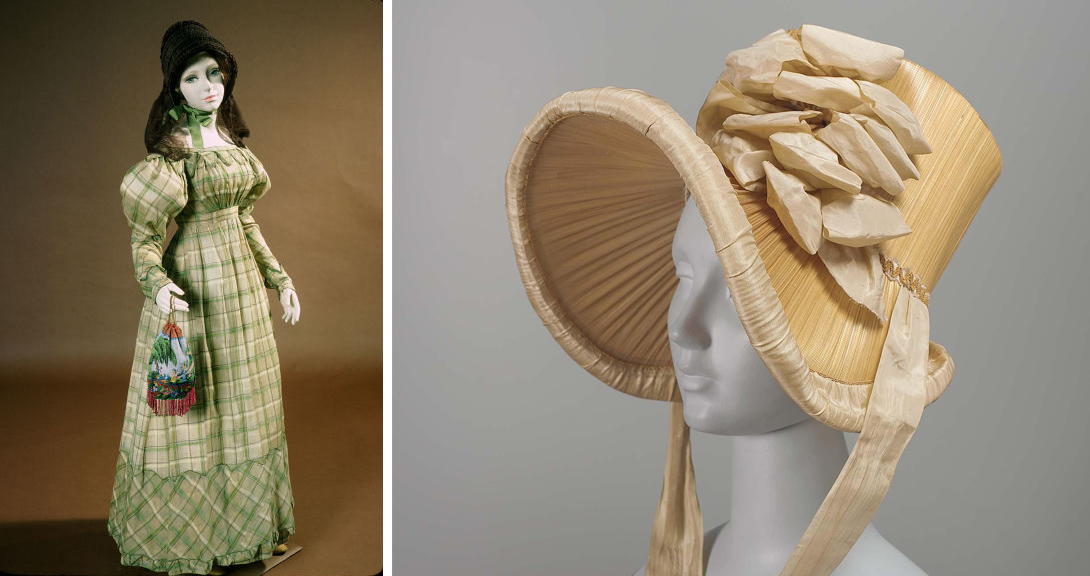
Finally, thousands of historical artifacts – many stored out of sight in the permanent collections of museums – are now virtually accessible in online databases. Though the collections are biased toward middle- and upper-class objects, they still provide a fascinating (and searchable) real-world check on the things you may find in paintings and old pattern books.
I use a program called Marvelous Designer to create natural-looking clothing for my scenes. It is a simplified version of more powerful applications used by professional clothing designers, and is used by digital artists who create animated films and video games. This project would not be possible without this remarkable tool.
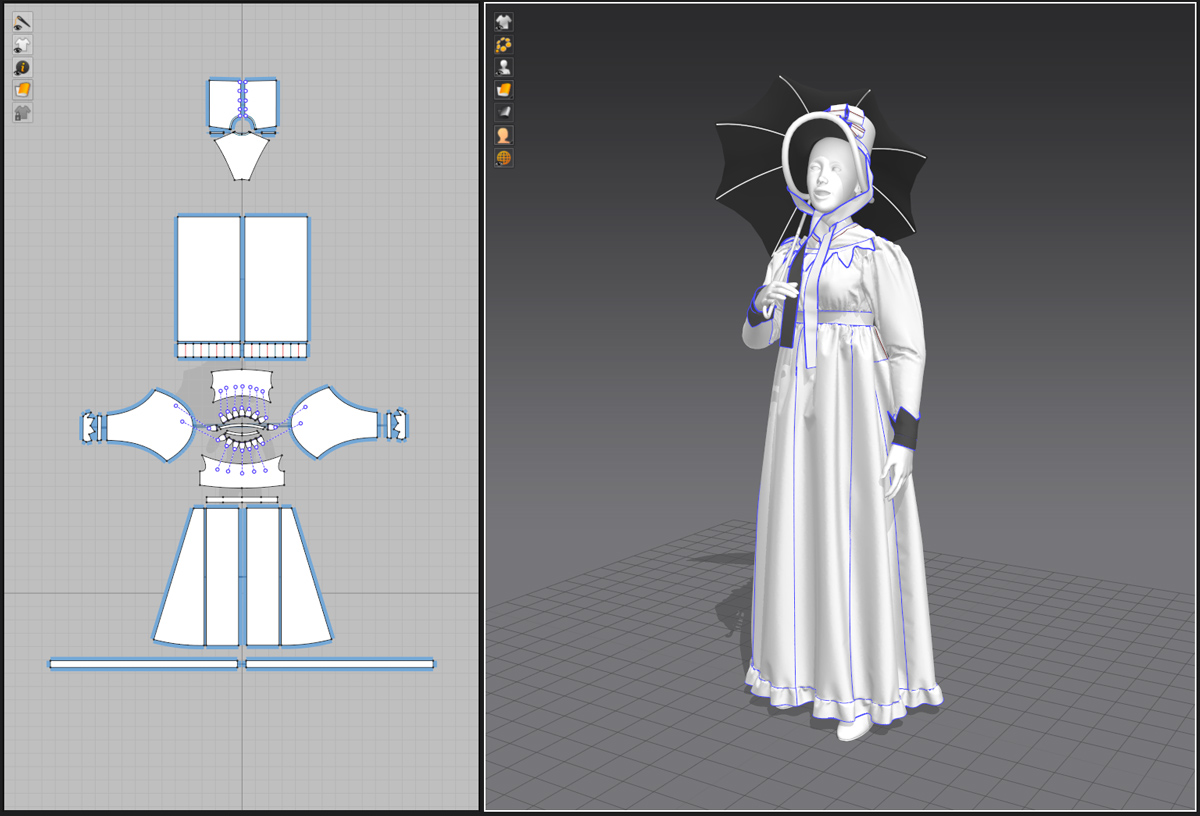
The workflow is simple: You draw the patterns and stitch them together, fitting everything to a 3D human model. Designer uses simulated gravity to make the clothing drape and fold naturally. Short animations move the models into the poses needed for the scene.
Here are a couple of examples of clothing created for packet boat passengers. (Packet boat travel was very democratic, with people of all classes crowded together on the boats.)
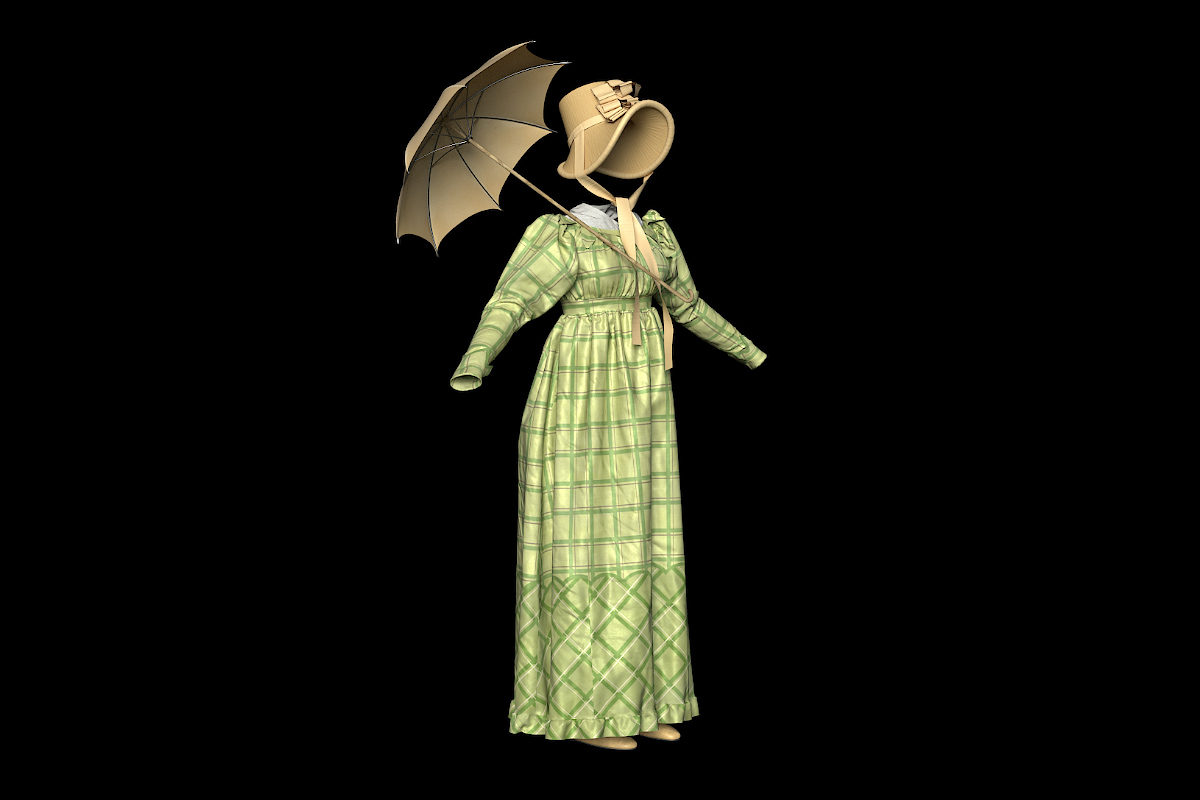
For the first, a well-to-do young woman from back East, two artifacts seemed to fit the bill: a gown from Old Sturbridge Village, and a bonnet from the Museum of Fine Arts in Boston.
After the patterns are cut out and and assembled in Marvelous Designer, the finished clothing is moved into Substance Painter, where patterns and colors are applied, as well as a texture to mimic the shiny surface of silk.
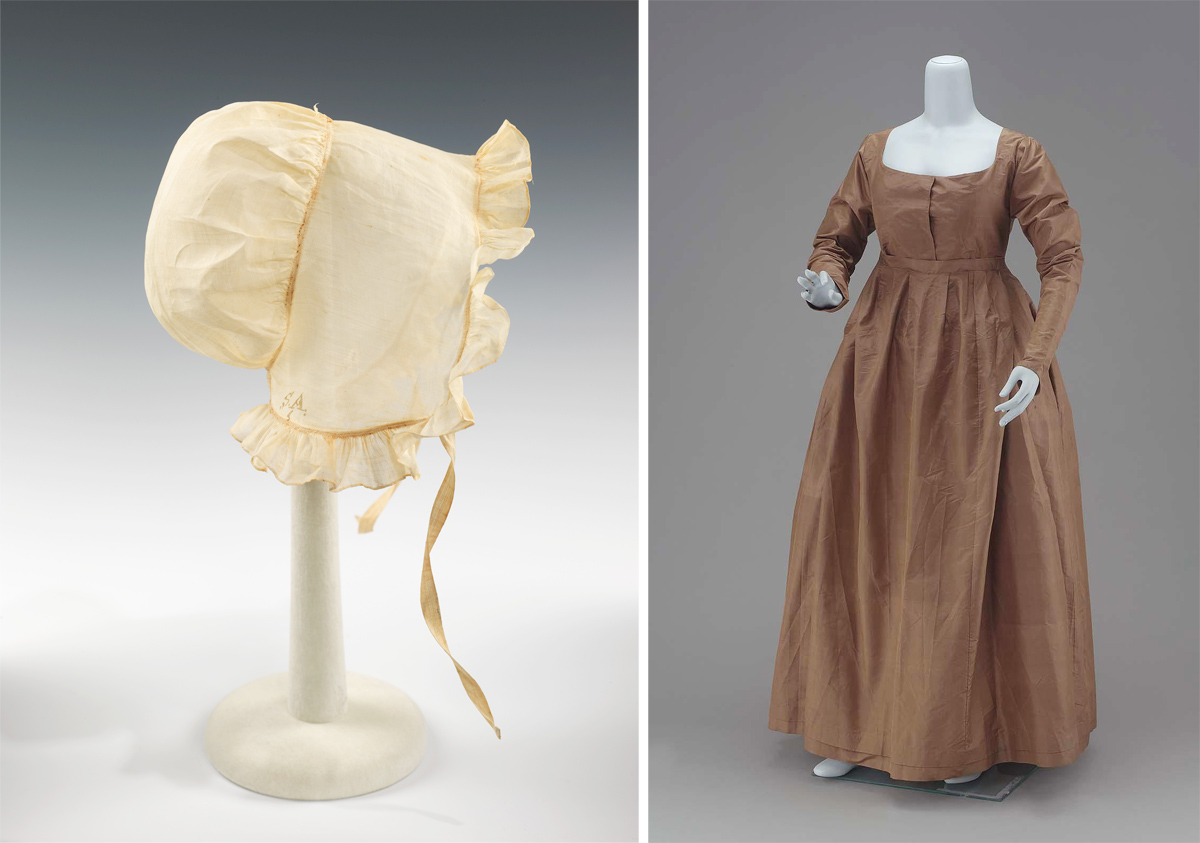
Western New York was home to several early Quaker settlements, so it also seemed appropriate to include a Quaker couple.
The woman’s clothing is based on objects from the Museum of Fine Arts and the Metropolitan Museum of Art in New York. The man’s clothing is based on a variety of sources including Friendship’s Pattern Cutting for Men’s Costume.

While the Quakers espoused plain dress, that meant simple designs, not inexpensive fabrics. The woman’s dress is again made of silk taffeta. The man’s shirt is cotton. Wool trousers and the ubiquitous straw hat complete his outfit.
These simple garments have the advantage of reusability. With small changes they can be recycled for use in other scenes, or even for different figures in the same scene.

